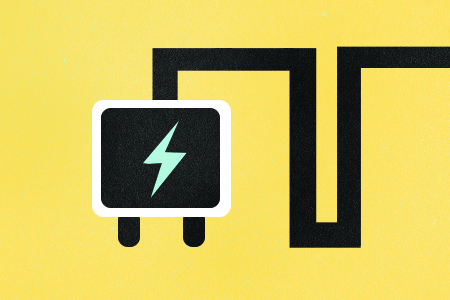Illustration by Kathleen White
Most electronic devices in your home consume very small amounts of energy per day. However, most homes have over 40 electronic devices, many of which are left plugged in and continue to consume energy even when turned off or left in standby mode. Adding together the individually small energy use of all of these electronics will reveal a high level of energy waste and hundreds—if not thousands—of dollars of needless annual charges.
There are many ways to relieve our planet and your personal finances of unnecessary energy consumption. Here are eight household energy thieves and the ways to disarm their energy use.
1. Air conditioning
Air conditioning is reported by Energy.gov to consume five percent of all residental electricity use in the United States. Some home systems can cost as much as $22 a day, so take every precaution to ensure that your air conditioning use is limited. Insulating your attic will help keep the sun’s heat out, closing doors to unused rooms will help contain cool air and using a dehumidifier to remove humidity will greatly cut air conditioning’s energy costs.
2. Refrigeration
Most new refrigerators use less than half of their cousins who were born in the 1980s. Making sure you have an energy-efficient model can save money, as they run for up to 10 hours a day. Using the energy saver settings will optimize performance and reduce the daily energy use. If you have multiple refrigerators at home, consider consolidating the contents into one to save hundreds a year.
3. Light bulbs
All light fixtures should be turned off when they’re not in use, as each bulb costs roughly six cents per hour to power—a seemingly low figure that can quickly add up. Additionally, LED bulbs consume about 50 less watts each per hour than incandescent bulbs, while lasting thousands of hours longer.
4. Media devices
Televisions, computers, video game consoles, DVD players and especially digital cable boxes all sap energy when left in standby mode. Connecting all of your home media centers to their own switchable power strips allows you to easily deactivate all of the devices when not in use.
5. Washer / dryer
Each load of washed and dried laundry is estimated to cost between $1 and $2. To cut that cost, use cold water to wash, which doesn’t necessitate the use of your water heater. Also, consider drying your clothes on a clothesline, cutting drying cost completely.
6. Small kitchen appliances
Unplug all small kitchen appliances when not in use. Toasters, blenders, convection ovens and other infrequently used devices work together to soak up energy, even when they’re not in use.
7. Shower / water heater
Limiting your shower times will decrease the amount of time it takes for your water heater to generate more hot water. Installing a low-flow shower head will also limit the energy used by your water heater.
8. Chargers
Unplug all wall charging devices after use. Their energy use is minimal, but it’s likely that there is a charging unit in almost every room of your house needlessly drawing energy even when your computer or phone isn’t plugged into them.












